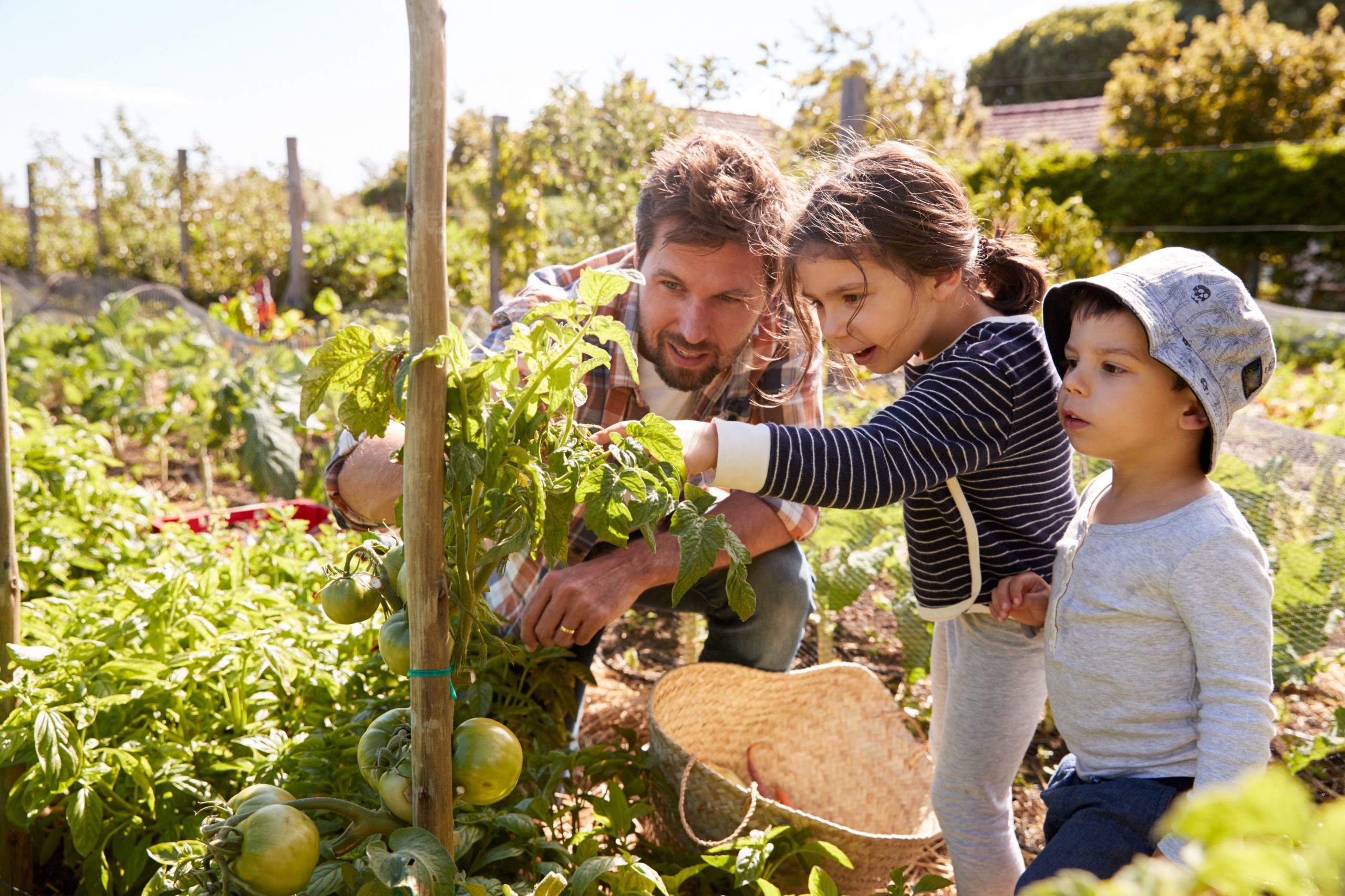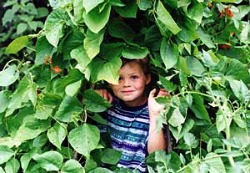
By Charlie Nardozzi

One of the joys of having an edible landscape and edible gardens is to share them with your kids and grandkids. When experienced gardeners look back at how and when they got started gardening, it often involved a parent, aunt, uncle, or grandparent taking them under their wing in the garden. I remember following my Italian grandfather around his garden as he tied up tomatoes and dug potatoes.
To be a model to your kids and grandkids, create a garden for them in your yard. What and how you plant will depend on many factors, most importantly the age and experience of your child. While gardening with older preteens and teenagers has many advantages, young kids are the most impressionable, so I’m going to focus on gardening with kindergarten to third graders, giving tips on starting an edible garden with your child. However, some of these tips apply to older kids, especially when adapted.
The bottom line when starting a garden with young kids is to keep it fun, engaging, and successful. It may mean doing more of the work than the child, but remember, you’re planting a seed that will hopefully grow into a lifelong love of nature, healthy eating, and the garden. Here are some tips to get you started in the right direction.
1. Have Realistic Expectations – Kids at this age are more about doing than getting results. This means the garden is a play place and the plant organization, health, and garden structure are secondary to the stories and fun that happens there. Kids may help plant and decorate the garden, but don’t expect a lot of help weeding, mulching, watering, or dealing with pests. You may be the one out in their garden weeding, replanting, or controlling an infestation to keep the plants healthy.
2. Involve Them in the Design – The more children help create the garden, the more they are likely to visit and work in it. Show them you value their garden by placing it front and center in the yard. I once planted my young daughter’s garden away in a side yard. It gave her the message the garden wasn’t as important as the other adult gardens. She rarely went there to visit it.Kids’ gardening brings out the best in everyone. Consider having other relatives, such as grandparents, help work in the garden with your child. It becomes a community event.
Kids love hiding places and shelters in their garden. Make sure you incorporate these when planning and planting the garden. Kids love to decorate their garden. Let their imagination run wild, even if it means fewer plants.Work with your child to brainstorm what to plant, how to arrange the plants and most importantly, what other decorations can go in the garden. Sometimes kids are more excited about building a cardboard spaceship to go with their themed outer space garden, than growing a row of ‘Space’ spinach. Have kids create concrete stepping stones in the garden decorated with leaves, flowers, and twigs. Leave room for digging, gathering, and playing in the garden. It may mean fewer plants, but the kids will have more fun. Consider adding structures like bean poles, sunflower houses, and grape vine wigwams as hiding places in the garden.
3. Site the Garden Well – Start small with the garden size. Remember a small garden to you, maybe a large garden to a child. Locate it close to the house but with some privacy, so kids can feel like this is their own space. Find a spot that gets full sun, is close to a water supply, and has well drained soil.
4. Make it Grow – Suggest building raised beds in the garden for planting. These will make it easier for kids to know where the garden plants are and where it is okay to walk and play. Amend the soil with topsoil and compost. Advise the kids on where to plant tall and short crops and proper plant spacing. Start with transplants and large seeded crops, such as zucchini and beans, so kids can plant more easily. However, all kids love carrots, so don’t shy away for planting small seeded vegetables as well.
5. Make Maintenance Easy – Suggest mulching garden pathways and spaces between plants with bark mulch, hay, or straw once plants are established. This will reduce the need for constant watering and weeding. Build structures for climbing vegetables, such as peas, pole beans, and cucumbers, and tall plants, such as tomatoes. Encourage kids to decorate these structures making them part of the garden theme.
6. Harvest Together – While being out in the garden together as much as possible is the goal, it’s most important to harvest crops together. You can show your child how and when to harvest so they can independently go out on their own during the growing season. Nothing turns off a child more than picking a vegetable before it’s ready, trying it and not liking the taste. Remember the key is to inspire success in the garden.
7. Celebrate the Garden – Most importantly, celebrate the garden. Suggest a party in summer inviting friends and family. Using the garden produce, work with your children to make the menu and cook it. They will feel very proud of their accomplishments and be inspired to grow more gardens in coming years.
